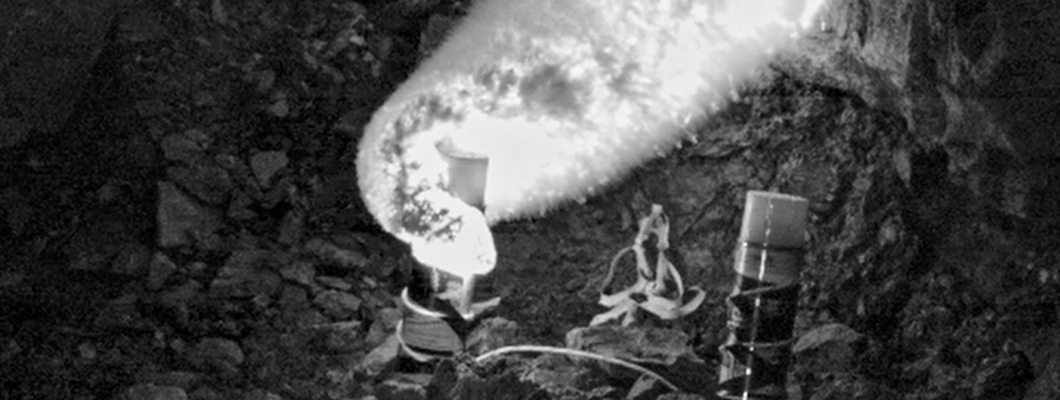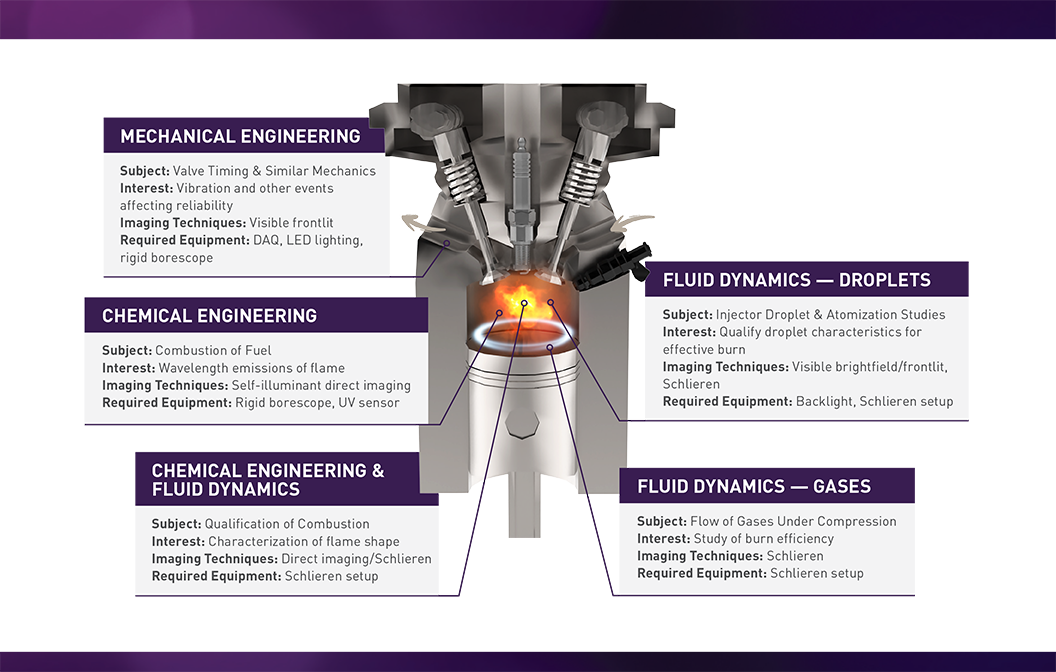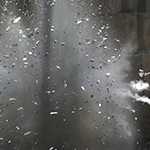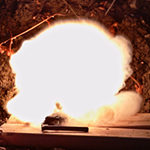Combustion
Combustion research is found in a variety of industries and can require advanced imaging techniques. A common automotive application is the activation of engine pistons. Explosives combustion is extremely fast and can be applied to everything from a firecracker to dynamite. Aerospace research includes rocket combustion such as hot exhaust and thrust creation, and supersonic combustion, when airflow moves beyond the speed of sound. Advanced study of these events can advance research on destructive capabilities, power efficiency, and waste reduction.

High-speed imaging gives research scientists a close look into:
- Complete stoichiometric combustion
- Incomplete combustion and byproduct creation
- Shock waves formation in air, water, and solids
- Fuel spray dynamics critical in the moments before combustion
- Transparent flows that indicate heat, air pressure, and airflow generation




